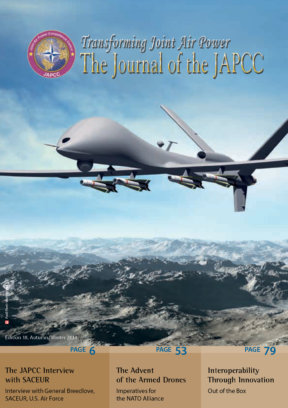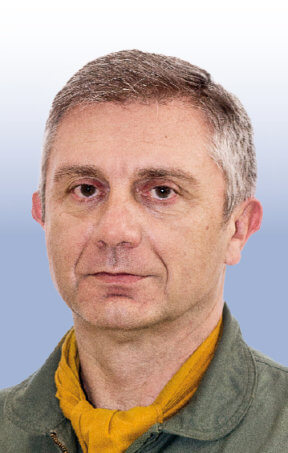Professional Mastering
Any soldier, especially at the leadership level, must have the competencies and skills that enable them to thoroughly plan and execute operations utilising timely decision-making in order to successfully handle these challenges. All too often, todays military leaders, particularly those that have been, or perceive themselves as having been “on the winning side of the recent wars”, maintain the status quo, organising, training and equipping their personnel with the same direction that led to success in the previous conflict. Their opponents, usually fundamentalists, rather than out and out warfighters; fuelled by ideology and driven by an inner belief to succeed, often think creatively about the next conflict.
For a long time nations structured and trained their military forces to conduct war on a battlefield with comparable forces. Today most military forces are still conventionally configured and structured while the structure of battle and the enemy has significantly changed. Raised and trained to think in such terms, nowadays politicians and military professionals alike, face difficulties when asked how to apply military force effectively. Western societies are becoming more and more a legitimate target for a variety of fundamentalist organisations, using both conventional and unconventional means. In such circumstances, fighting for hard and absolute objectives of an interstate war turns toward more flexible objectives. State actors, mainly multinational groupings, typically find themselves in confrontation or conflict with non-state parties which are highly effective at finding new uses for old weapons. Furthermore, continuous media presence on the front lines ensures constant worldwide exposure, which has the potential to influence operational decision making.
Recent operations provide incontrovertible evidence at all levels of command that commanders are required to act outside the traditional military patterns. Such deep interaction has been outside the normal military convention and thus received less attention in military E&T, especially from an Air Power perspective. All military forces and especially air forces recruit highly talented individuals to maintain force capacities, readiness and leadership. All their ‘learning’ is done through formalised E&T programmes, which are often conducted in a structured and constrained manner, without opportunity or intent for individual or collective reflection. Also within the corresponding civilian public services, only a few train for the identified way to operate under the new paradigm of modern conflicts. Efforts conducted on community level to encourage real ‘jointness’ are still limited to a very small scale. In highly qualified career paths dealing with a very high level of technical and psychological complexity like in air forces, E&T is mainly seen as a cost factor that requires an amortisation to become cost effective. Hence in the early years of their careers service personnel become technically and tactically proficient which will pay off over the rest of their careers, but their ability and willingness to analyse, evaluate, and create while becoming able to comprehend and to understand why things are done the way they are done, is blunted. Intense and expensive individual training is concentrated in the early period after entering the military service. While on Mid-level or senior level the ability to think ‘jointly’ at all levels is getting more and more important, training opportunities (e.g. staff or war colleges) are seldom available to a wider audience.1
Decisions Makers Role in Joint Doctrine
It is essential for military commanders to understand the connections between political objectives and the actions of military forces to support those objectives. E&T must play a vital role in qualifying not only the commanders but also political and military decision makers to cope with such conflicts and confrontations.
The new NATO Command Structure and the decisions taken by the political leadership of the Alliance in the 2010 Lisbon and 2012 Chicago Summit mandated changes which NATO is currently transforming into action. This, in combination with the significant change of the ISAF mission, drives changes in the way NATO and its members prepare and generate military forces. Even if those changes are generally recognisable, very often mind-sets and reaction schemes remain unchanged. As they pretend to be less affected by geographic and socio-political settings than the land forces in the NATO Air and Maritime environment fewer changes to the former training and exercise regimes occur. Both services often limit exercises to evaluation of combat readiness and capabilities, assessing the performance of tactical units within their specific tasks. In such circumstances it is a logical consequence that passing the test gets more attention than conducting collective training with a focus on jointness. Never the less the new positions of the HQ AIRCOM and HQ MARCOM in the NATO Command Structure (NCS) require significant changes in their mind-sets towards Education, Training and Exercises. Regardless which NATO nation one may look at, their air and naval forces train and prepare in similar ways. This principal commonality shared, not exclusively but especially, among NATO air forces creates many difficulties for them when integrating with ground forces. It became evident in missions like Bosnia, ISAF or OUP that the issues of insufficient inter-service cooperation and different service perspectives have not been adequately addressed in the extant training regimes. Even further it is a fact that small or large military successes have been achieved in operations like KFOR, ISAF or OUP, but due to the absence of a clearly defined political end state, no lasting success on the strategic level was achieved. As long as military and political leadership do not learn and train together to understand each other and their demands, this hardship will remain. Just like the single services will continue to fail in achieving real ‘jointness’.
The perspectives of ground, maritime and air services on threats and how to contain them by application of force are significantly different. Consequently this difference is also recognisable with regards to training and exercises. At the same time the characteristics and natures of threats towards NATO, nations, or any other (western) alliance or coalition keep changing, expanding, and gaining higher levels of complexity. It is acknowledged that there is still a need for a full-scale defence capability and hence a need to train and prepare for it, but its structure and culture will change. The characteristics of threats delivered from space, cyber-space or by unmanned weapons like UAV aim to influence the will or the objectives of target populations, governments and institutions. They describe the scene for future major NATO or national defence operations. Manipulation of decision-making and information gaining or analyses processes by targeting information management and knowledge development processes, will become the main objectives for any opponent. For NATO, territory defence on NATO ground will either become a matter of inner security (usually handled by regular police or other civilian forces rather than the military) or be limited to local incidents from precisely targeted attacks by heavy or long-range weapons like artillery, ballistic missiles or airframes.
Future of E&T
There is a lack of understanding of the needs of other services at the strategic and operational level, while most education, training and exercises rarely exceed tactical level issues. E&T are essential pillars in which the Alliance must trust. Financial constraints put frequency of training at risk and may deny leaders valuable experience needed in the field. Hence innovation in the development of training programs and opportunities in the military and civilian domain will be essential. Peace keeping or peace enforcing missions and support of humanitarian assistance on the ground with support from the air and from sea may remain the main scenarios to which NATO, ad-hoc coalitions or nations will need to utilise their forces. At the same time the stability and functional infrastructure, which is the backbone of our economic and social wellbeing, needs to be defended against new challenges and threats along the lines of cyber-attacks or sabotage to various lines of communication.
Is following the tendency of current leadership to train personnel just in order to fill billets in peacetime or crises organisational establishments, while focusing towards increased technical or tactical proficiency and readiness evaluation suitable to match those challenges described above? What kind of training and education would apt such demanding scenarios and at what cost? In the current world financial climate it can often be politically difficult to justify military expenditure and Education, Training and Exercises are an easy target for cost-cutting measures – made all the easier because the results of such savings will not be seen for a number of years. Without Exercises and Training to inform the debate, how can the Alliance form and develop the necessary networks to support future capability? In which ways will ideas be exchanged and thinking be challenged towards common understanding and effectiveness? Is NATO’s ‘smart defence approach’ more about smart preparation for missions rather than about smart execution of them?












